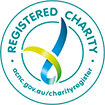Cardiomyopathy is a term used to describe a disease of the heart muscle. The name means CARDIO - heart, MYO - muscle, PATHY - disease.
While the exact number of individuals with cardiomyopathy in Australia is currently unknown, it is estimated that the condition affects approximately 1 in 500 people. Recent studies suggest the prevalence could be as high as 1 in 250.
The main types of cardiomyopathy are:
- Dilated: The most common form characterised by an enlarged heart
- Hypertrophic: Thickened heart muscle
- Arrhythmogenic right ventricular: Associated with arrhythmias
- Restrictive: The least common form, involving a stiff heart
- Ischaemic: Resulting from reduced blood flow due to coronary artery disease
- Takotsubo: Often triggered by stressful events, also known as 'broken heart syndrome'
- Left ventricular noncompaction: Spongy texture of the walls of the left ventricle
- Peripartum: Occurs during or shortly after pregnancy
- Infiltrative: Caused by the buildup of abnormal substances in the heart muscle, such as amyloidosis and sarcoidosis



